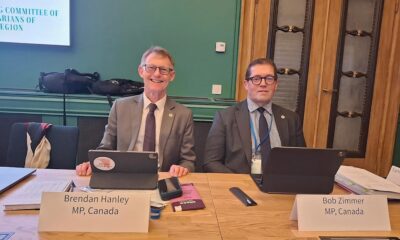World
Alaskans Set to Receive $1,000 Dividend Amid Rising Costs

Residents of Alaska are poised to receive a $1,000 dividend from the state’s Permanent Fund, starting Thursday, as lawmakers navigate a challenging budget landscape. This annual payment, derived from Alaska’s vast oil wealth, is designed to provide financial relief to residents facing high living costs, particularly during the harsh winter months.
In Fairbanks, Allyssa Canoy, a single mother of two, is one of many who will benefit from this payment. The unexpected arrival of a heating fuel truck at her home brought a hefty bill of $2,600, highlighting the pressing need for the dividend. Canoy plans to allocate part of the $3,000 her family is set to receive to cover this expense, while allowing her sons to use the remaining funds for their needs.
Understanding the Dividend Distribution
The Alaska Permanent Fund was established in 1976 with the aim of saving a portion of the state’s mineral wealth for future generations. Dividends have been distributed since 1982, providing Alaskans with a direct stake in the state’s financial success. This year’s payment marks a decline from previous years, as the amount of $1,000 per person is the lowest since 2020. By contrast, had the original formula for calculating dividends remained in place, residents would have received approximately $3,800 each.
Lawmakers have shifted away from the formula tied to the fund’s market performance, opting instead to determine the dividend amount through budget negotiations. This change has sparked concern among some residents, including Canoy, who expressed a desire for a more consistent and equitable approach to dividend distribution. She stated, “It would give Alaskans a little peace of mind that we’re actually doing everything that we can to make sure that you guys get the most out of the permanent fund dividend.”
Impact on Residents and Local Economy
With over 600,000 of Alaska’s approximately 740,000 residents eligible for this year’s payment, the dividend plays a crucial role in the local economy. For many, it serves as a vital supplement to address everyday expenses, including heating fuel, groceries, and transportation costs. In rural areas, where access to essential services can be limited, the dividend may also be used for critical purchases such as winter tires or snowmobiles.
The distribution of the dividend comes at a time when many Alaskans are grappling with rising costs for basic services, including internet and fuel. While some residents may use the money for discretionary spending, others rely on it to meet essential needs. Canoy’s situation reflects the latter, as she faces immediate financial pressures while also preparing for a move.
In recent years, Alaskans have also received additional energy relief payments alongside their dividends, a response to the increasing burden of living expenses. This year’s $1,000 payout has been a topic of debate among lawmakers, who must balance the needs of residents with funding for state programs, including education.
The Alaska Permanent Fund has grown significantly since its inception, thanks to prudent investments. While the state constitution safeguards the fund’s principal, its earnings can be utilized for dividends and state budgets, making it a critical component of Alaska’s financial framework.
As Alaskans prepare to receive their payments, the ongoing discussions around the fund’s management and the future of the dividend will likely remain a focal point in the state’s political landscape. For residents like Canoy, the immediate relief provided by the dividend offers a necessary buffer against the challenges of winter living in Alaska.
-

 Politics4 weeks ago
Politics4 weeks agoSecwepemc First Nation Seeks Aboriginal Title Over Kamloops Area
-

 World5 months ago
World5 months agoScientists Unearth Ancient Antarctic Ice to Unlock Climate Secrets
-

 Entertainment5 months ago
Entertainment5 months agoTrump and McCormick to Announce $70 Billion Energy Investments
-

 Science5 months ago
Science5 months agoFour Astronauts Return to Earth After International Space Station Mission
-

 Lifestyle5 months ago
Lifestyle5 months agoTransLink Launches Food Truck Program to Boost Revenue in Vancouver
-

 Technology3 months ago
Technology3 months agoApple Notes Enhances Functionality with Markdown Support in macOS 26
-

 Lifestyle3 months ago
Lifestyle3 months agoManitoba’s Burger Champion Shines Again Amid Dining Innovations
-

 Top Stories2 months ago
Top Stories2 months agoUrgent Update: Fatal Crash on Highway 99 Claims Life of Pitt Meadows Man
-

 Politics4 months ago
Politics4 months agoUkrainian Tennis Star Elina Svitolina Faces Death Threats Online
-

 Sports5 months ago
Sports5 months agoSearch Underway for Missing Hunter Amid Hokkaido Bear Emergency
-

 Politics5 months ago
Politics5 months agoCarney Engages First Nations Leaders at Development Law Summit
-

 Technology5 months ago
Technology5 months agoFrosthaven Launches Early Access on July 31, 2025





















